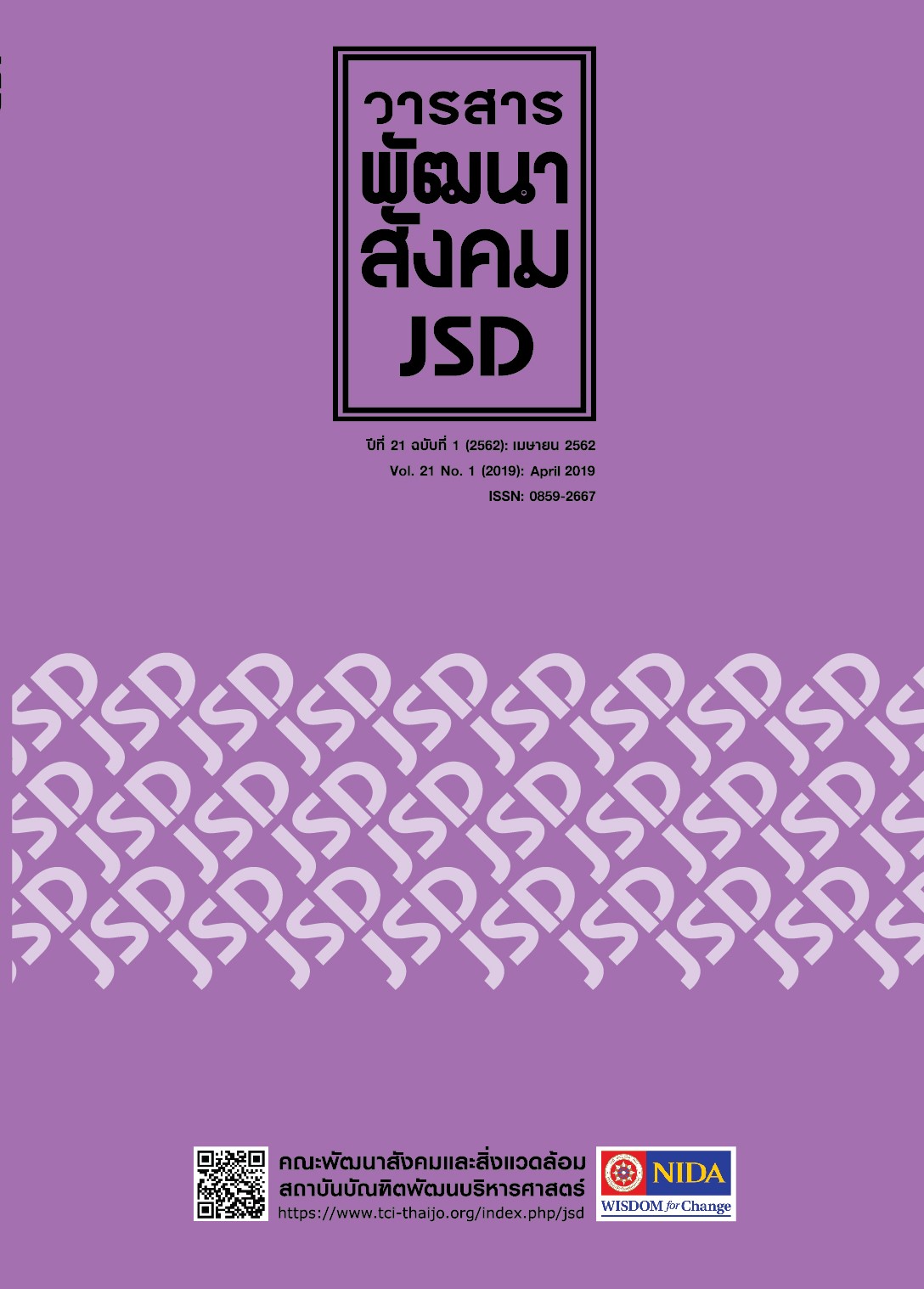The Study of Income Distribution in Thailand: A Case of GINI Coefficient of Household in 2009 - 2017
Main Article Content
Abstract
การวิจัยครั้งนี้มีวัตถุประสงค์เพื่อศึกษาการกระจายรายได้ปี พ.ศ. 2552 – 2560 และเสนอแนะ
แนวทางในการแก้ไขการกระจายรายได้ของประเทศไทย วิธีดาเนินการวิจัยเป็นรูปแบบเชิงปริมาณ อาศัย
ข้อมูลจากการสารวจภาวะเศรษฐกิจและสังคมของครัวเรือนของประเทศไทย ของสานักงานสถิติแห่งชาติ
ผลการวิจัยพบว่า นโยบายของรัฐบาลยังไม่สามารถตอบสนองความต้องการของประชาชนอย่างแท้จริง
เนื่องจาก ปัญหาเรื่องความไม่เชื่อมั่นในการลงทุนประกอบกับหนี้ในภาคครัวเรือนและหนี้สาธารณะ
ครัวเรือนส่วนใหญ่ของประเทศมีรายได้ค่อนข้างต่า ค่าสัมประสิทธิ์ความไม่เท่าเทียมทางรายได้มีการ
ปรับตัวที่ลดลงอย่างต่อเนื่อง อย่างไรก็ตาม ในปี พ.ศ. 2560 มีการปรับตัวสูงขึ้นเล็กน้อย เนื่องจาก สภาพ
การเมืองและเศรษฐกิจที่ไม่ชัดเจน ส่งผลให้นักลงทุนขาดความเชื่อมั่นต่อระบบเศรษฐกิจในระยะยาว
หนี้สินในภาคครัวเรือนปรับตัวสูงขึ้นในปี พ.ศ. 2560 เป็นร้อยละ 50.7 โดยเพิ่มจาก 116,681 บาท ในปี
พ.ศ. 2550 เป็น 178,994 บาท ในปี พ.ศ. 2560
Article Details
References
National Statistical Office. ( 2009) . Household Socio- Economic Survey 2009. Ministry of Information and Communication Technology, Thailand. [in Thai].
_____________________. ( 2011) . Household Socio- Economic Survey 2011. Ministry ofInformation and Communication Technology, Thailand. [in Thai].
_____________________. ( 2013) . Household Socio- Economic Survey 2013. Ministry of Information and Communication Technology, Thailand. [in Thai].
_____________________. ( 2015) . Household Socio- Economic Survey 2015. Ministry of Information and Communication Technology, Thailand. [in Thai].
_____________________. ( 2017) . Household Socio- Economic Survey 2017. Ministry of Information and Communication Technology, Thailand. [in Thai].
Pattamasiriwat, D. (2016). Unequal Income Distribution in Thailand. Bangkok: [in Thai]. Chulalongkorn University Printing House.
Phongpaichit, P. & Baker, C. (2016). Unequal Thailand: Aspects of Income, Wealth and Power.
Phongpaichit, P. (2014). Toward a more Equitable Thailand. Bangkok: [in Thai]. Matichon.
Piketty, T. , & Goldhammer, A. ( 2014) . Capital in The Twenty- First Century. Cambridge Massachusetts: The Belknap Press of Harvard University Press.
Salverda, W., Nolan, B., & Smeeding, T. (2009). The Oxford Handbook of Economic Inequality. United Kingdom: Oxford University Press.
Sarntisart, I. (2011). Income Distributional Analysis: Measurement and Economic Modelling.
Bangkok: [in Thai]. Chulalongkorn University Printing House.
Stiglitz, J. E. (2012). The Price of Inequality: How Today's Divided Society Endangers Our Future. The United States of America: W.W. Norton & Company.
Suwanmala, C. (2015). Thailand’s Fiscal Democracy. Bangkok: [in Thai]. Chulalongkorn University Printing House.
The Office of the National Economic and Social Development Board. (2011). The Poverty Situation and Inequality of Thailand in 2008. Bangkok: The Social Data-based and
Indicator Development Office.
Thongpakde, N. (2015). Public Economic. Bangkok: [in Thai]. Three LADA Limited Partnership.
Wrasai, P. (2015). Income Inequality and Economic Growth: A Case of Thailand. Bangkok: [in Thai]. Faculty of Economics Thammasat University.
Zucman, G., Fagan, T. L., & Piketty, T. (2015). The Hidden Wealth of Nations: The Scourge of Tax Havens. Chicago: The University of Chicago Press.


